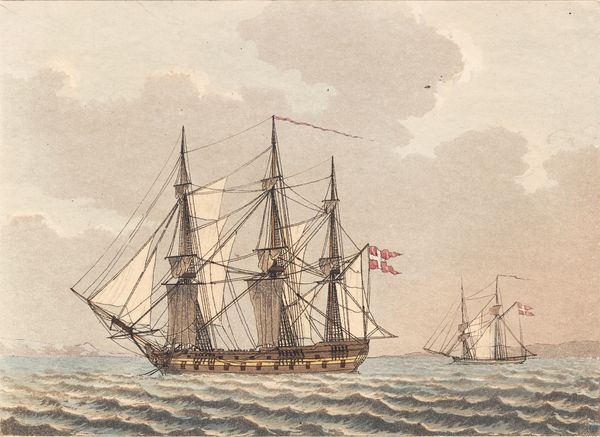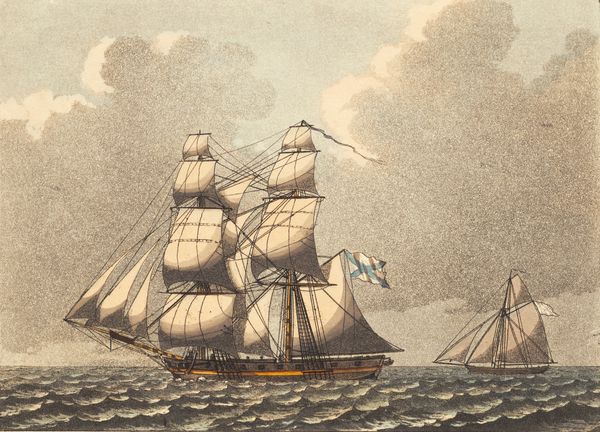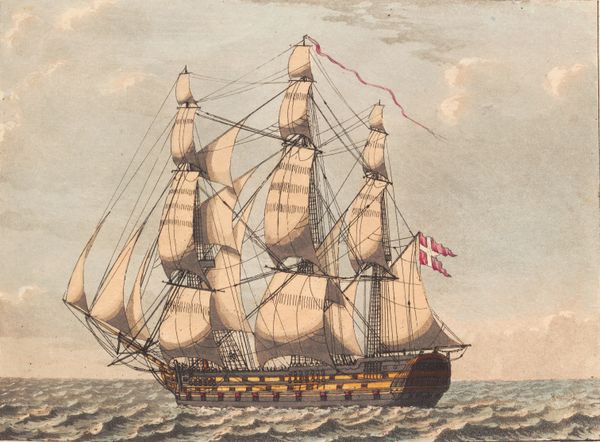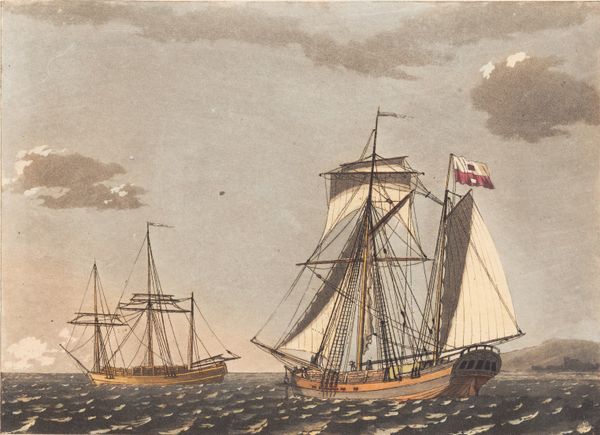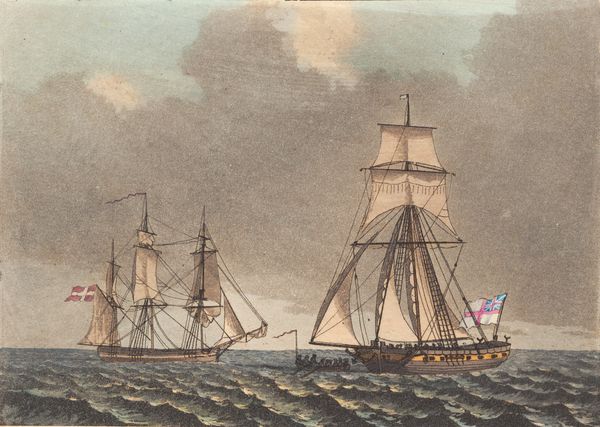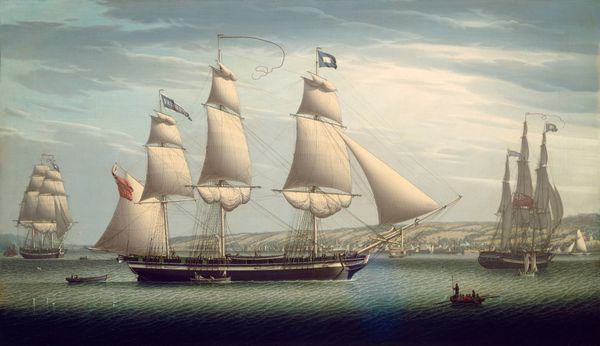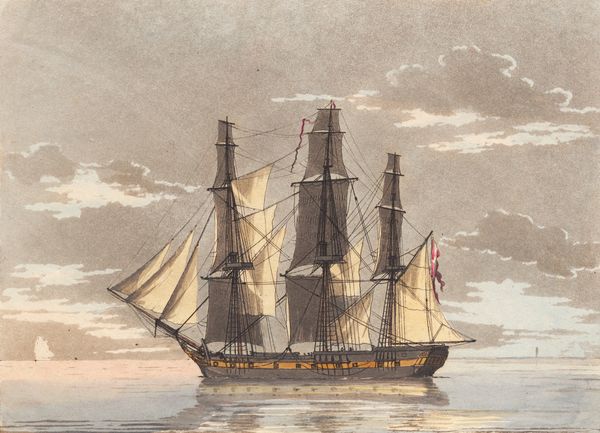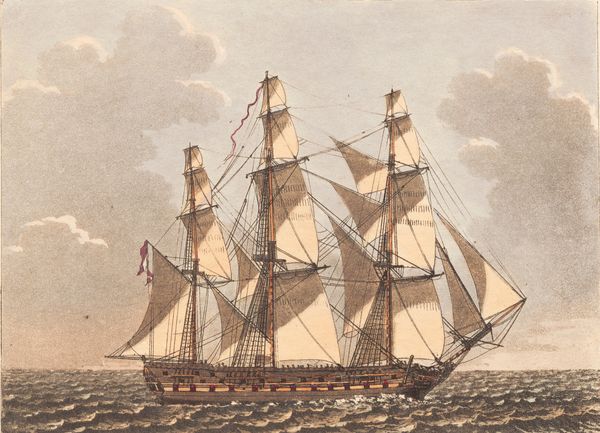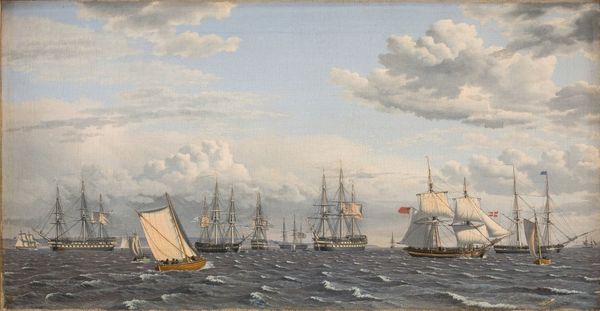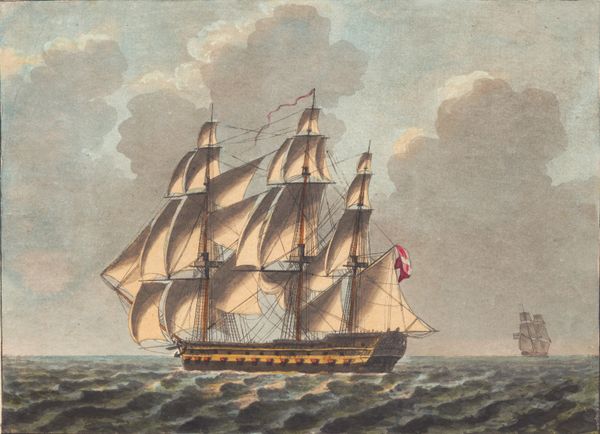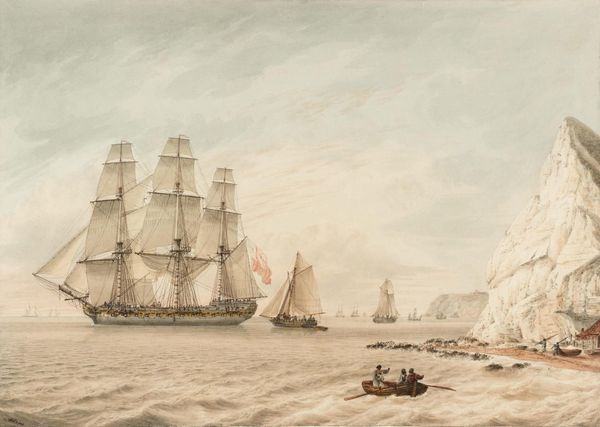
painting, plein-air, oil-paint
#
ship
#
painting
#
plein-air
#
oil-paint
#
landscape
#
oil painting
#
romanticism
#
line
Copyright: Public domain
Curator: Here we have "The Ship Isabella at Sea," painted around 1820 by John Wilson Carmichael. It is an oil painting presented in the plein-air style. What are your first thoughts? Editor: I am struck by its melancholy atmosphere, actually. The muted tones of the sky and the heavy sea give a sense of isolation. What do you find compelling about its materiality? Curator: Well, given that it was created en plein air, the very act of making this artwork involved transporting materials—canvas, oils, brushes—to the location itself. That process connects Carmichael intimately to the environment and suggests an immediate engagement with the ship and the sea. Consider the labour involved to capture a subject so mutable! Editor: Exactly. And we have to remember the historical context. A ship isn't just a pretty vessel; it’s bound up with global trade, colonization, and, yes, naval power. To show this ship sailing in romanticism with precision means the labour it demanded both on canvas and aboard would show a complex global system. What flag is that at its mast? Curator: It is a Union Jack. This points toward the extensive manufacturing and resource extraction networks tied to Britain's maritime power during this era. Even the paint itself was manufactured and distributed through complex trade routes. Editor: I notice how the composition itself seems to trap the Isabella between the heaviness of the sky and water. A lonely sign of imperial enterprise that is about to go out to all of the globe at all costs. I suppose it is not an accident given that Carmichael was deeply embedded in the art scene of maritime and military imagery. Curator: Right, understanding Carmichael's background gives us even more context for interpreting this scene. His artistic practice, embedded within a system of production and patronage, served specific interests and conveyed ideological messages. The choice of materials—oil paint, canvas—were decisions entangled with political and economic forces, after all. Editor: The almost dream-like state of this image seems a bit troubling once one understands its meaning! Curator: Indeed! Next time you see a maritime painting, maybe you’ll also ponder the intricate dance between the brushstrokes, the historical moment, and the global structures of production that enabled its very creation. Editor: Thank you; it surely changes one's perspective and invites crucial questions about artistic creation within social structures!
Comments
No comments
Be the first to comment and join the conversation on the ultimate creative platform.
